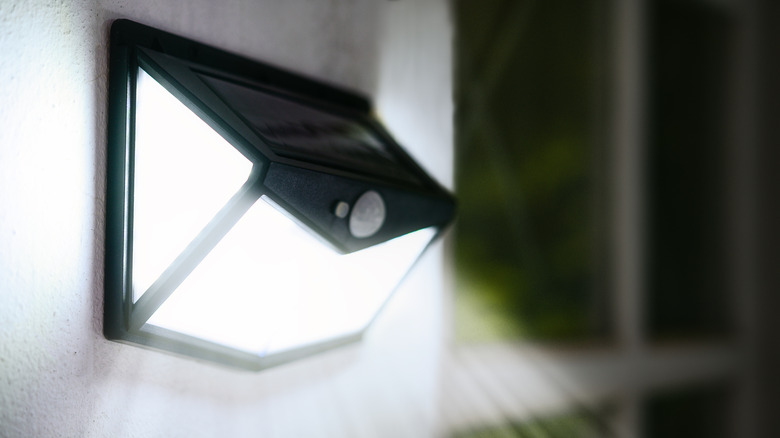Raccoons are generally unwelcome guests. Not only known for having the potential to spread diseases like rabies, these animals are also just plain nuisances. Colloquially referred to as “trash pandas,” these small mammals are notoriously found knocking over garbage cans and strewing rubbish all over the place. It can be a huge and disheartening task to clean up after an overnight raccoon party on your property. Obviously, the best way to prevent this kind of mess is to simply keep raccoons away to start with. One way to do this is to remove the temptation of overly-pungent or easily-accessible garbage, but this isn’t always as easy as it sounds. Another effective way to keep raccoons out of your yard is to install motion-activated lights around your property.
Naturally nocturnal, raccoons are almost always asleep in the safety of their dens during the day and typically only come out at night. Like cockroaches, the sudden illumination of their immediate area causes them to scurry back into the shadows. Installing outdoor lighting is a great way to keep them wary of your home. If they don’t feel safe, they won’t venture forward. However, raccoons are extremely intelligent and won’t be fooled by rudimentary tactics, which is why motion sensor lights are ideal over other traditional or timed lighting solutions.
Use motion sensor lights to scare raccoons away

Most outdoor security lights with motion detection use a passive infrared system that senses rapid changes in the ambient temperature. The sensor generally has a wide lens and can detect infrared energy within its field of vision. When there’s a burst of infrared energy across this field, such as what might be caused by a person or animal approaching your home, the sensor activates and the light turns on.
The unpredictability and spontaneous illumination of motion-activated lights is unsettling to raccoons. They see the light as an indication of a potential threat and will avoid it at all costs, even if it means abandoning a promising food source. LED lights are very bright and use little electricity compared to traditional spotlights, so they’re a great option to install as a deterrent against raccoons. Another option is solar red flashing lights, which not only flash on and off but emit a red-colored light that is seen as even more threatening to the little creatures. These should be placed all around your property to deter raccoons who might enter your lawn from multiple locations. Also place them near your garbage to successfully banish racoons from your trash cans.
Why your traditional outdoor lights haven’t worked
Raccoons are incredibly resourceful animals with a high intelligence and great problem solving skills. If they identify your home and particularly your garbage cans as a reliable food source, they will keep coming back. Porch and pathway lights are undeniably effective at keeping away potential intruders, but they have downsides when it comes to raccoons because they’re so much smarter than other woodland animals.
Lights that turn on and off from a switch in the house, those that are on a timer, and those that automatically turn on in low light are all deterrent options for nocturnal animals like raccoons, but the raccoons are able to outsmart them if motivated enough. Because these lights remain on all the time, raccoons will adapt to them and won’t view them as a threat but just an obstacle to avoid. Their innate problem solving abilities will quickly assess the situation and will either subvert the light by staying out of its range or ignore it altogether. If you’ve found that your outdoor lighting has stopped working as a raccoon deterrent, it’s time to upgrade to a motion sensor option to disorient and confuse these annoying foragers. Let them find their food and shelter elsewhere.